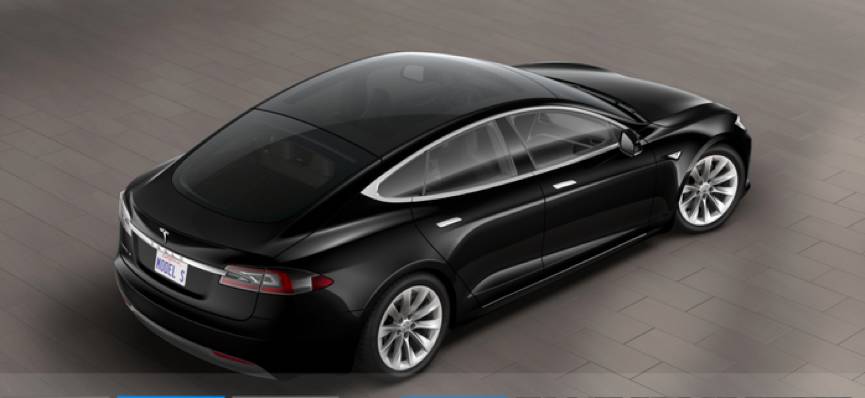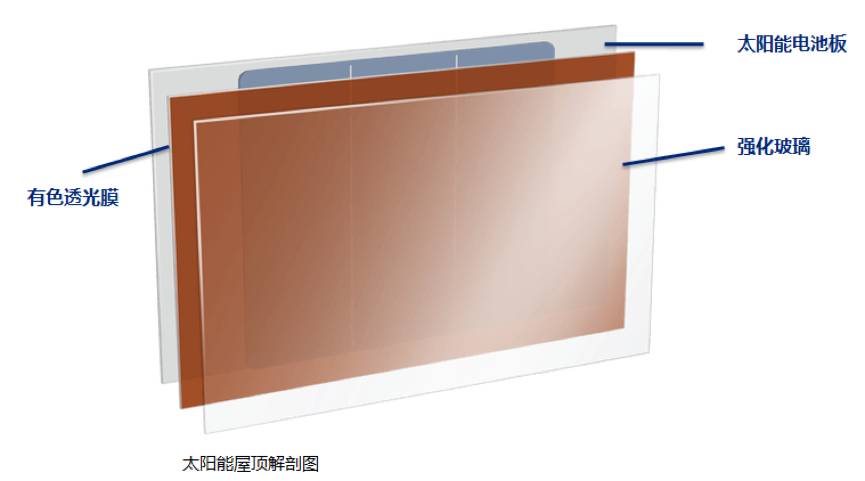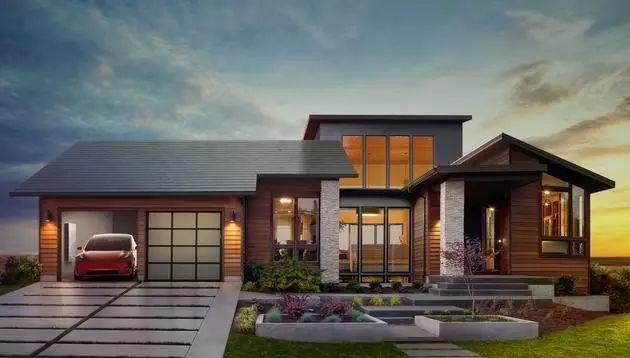“Super Glass” Team Emerges
**
**
Last month, Tesla teamed up with SolarCity to release a solar roof product, and the highly secretive “Tesla Glass” project gradually emerged. With Tesla officially announcing that it will be using the material on the Model 3, which is set to hit the market next year, industry insiders are excited as solar-powered homes and cars seem to be merging into our lives.
Hopefully, this will be the case.
But it is still worth seriously studying what Tesla Glass is. After all, the specific technical details are almost non-existent in current official materials.

A structure chart released on the Tesla website shows that the solar roof tiles are covered with a layer of colored light-transmitting film, an efficient solar cell panel, and a layer of tempered glass on the outside. Tempered glass is responsible for withstanding various temperatures and object impacts, colored light-transmitting film enhances visibility and aesthetics, and solar cell panels convert solar energy.
The solar cell panel is produced by Matsushita and SolarCity while the colored light-transmitting film is developed by 3M. If SolarCity’s 17th shareholder approves the Tesla acquisition, both parties will manufacture solar cell panels at the SolarCity factory in Buffalo, New York.
In an interview with the media, 3M claimed that Tesla approached them with a design concept for a colored light-transmitting film, which was then developed by 3M. This light-transmitting film maximizes light transmission, enhances energy conversion, and its unique louvered film structure changes the color of the overall tile according to the angle of the light, making the solar roof look like a regular roof from the street, and the cell panel is only visible when viewed from above.
It now appears that the innovative variable light-transmitting film is the key to Tesla’s solar roof surpassing all similar products because it solves the problem of aesthetic style. In the past, solar roofs looked like a rooftop with a solar panel installed, lacking architectural beauty. The outer layer of tempered glass is a flexible glass material, which should be the main focus of the Tesla glass team’s development. When subjected to external force, this flexible glass produces a rebound force, which protects objects from damage.Tesla later stated that Tesla Glass will be used on the Model 3, which has sparked many people’s imagination. First, the Model 3’s large windshield and roof may use this special material to use solar energy to power the car’s components or even the power source. Second, the various touch-screen devices inside the car may also use this flexible glass. We can boldly imagine that as glass material technology continues to improve, there will be more color options available, and this flexible material with solar energy capabilities may even be applied to the entire car body considering its high strength and resilience which can simultaneously protect people inside and outside the car. (Don’t say it’s too expensive to consider, low-cost rockets have been built, nothing is impossible)
The future of promoting solar roofs depends on cost and energy efficiency
**
**
Solar roofs and solar cars are not new concepts. The most important problem for solar products is still cost and energy efficiency. Musk stated at the conference that the overall cost of this solar roof is lower than that of traditional tile roofs, and he said that the production cost of this special glass material is not high.
In fact, in 2014, SolarCity acquired a company dedicated to the production of solar panels, Silevo. It is reported that the company’s technology can help SolarCity improve energy utilization and reduce costs. In 2015, SolarCity announced the development of the world’s most efficient solar panels, with an energy utilization rate of up to 22%. Compared with similar panels on the market, SolarCity said that energy utilization rate can be increased by 30% to 40% while maintaining the same size and reducing production costs.
Without any doubt, as long as Musk is interested, he can force his team to continuously challenge technological limitations, otherwise, he wouldn’t be able to build his rockets. When asked about a certain component in the rocket development process, a scientist under Musk said that at NASA, many discussions will be held to discuss such issues, and the snacks and drinks expenses during the meeting are even higher than Musk’s budget.
Therefore, we can expect that Tesla and SolarCity have already developed lower-cost solar panel technology, paving the way for larger-scale promotion.
There are also doubts
**
**Because the details of this super glass material have not been released, there are still many controversies over the efficiency and strength of the solar tiles after the product launch. Many experts have expressed that it is difficult to achieve the efficiency claimed by Musk under the current technological conditions.
In fact, Tesla and SolarCity’s solar panels use third-generation thin-film solar power generation technology, which basically represents the future development trend of solar technology. Thin-film cells are widely used in industry due to their thinness and flexibility. Japan has developed clothes made of thin-film solar cells (not sure what the point is) and spacecraft (Musk said: this is possible). However, the premise for large-scale promotion is still efficiency and cost. Scientists from multiple European countries have established an alliance focusing on thin-film solar technology and announced that they will develop thin-film solar cells with an efficiency of around 25%. In fact, as long as the conversion efficiency is high enough, making cars is not a difficult thing.
In fact, Tesla’s solar roofs and cars using super glass material can also be regarded as “star products” for promoting thin-film power generation technology to the world. After all, thin-film power generation technology has always been an important but sluggish future issue in the solar technology field because it has not been able to realize its potential due to various constraints.
This makes me more confident that Musk can force his team to tap into the potential of this technology and bring us more innovative products in the future.
PS, I am just worried that if anything unexpected happens during the voting for the SolarCity acquisition on the 17th, everything will fall apart. After all, only by acquiring SolarCity can everything continue, and we have the opportunity to see if Musk can create miracles.

There are only ten days left before Tesla’s shareholder vote on the acquisition of SolarCityTesla’s new product release marks its first ever profit
This article is a translation by ChatGPT of a Chinese report from 42HOW. If you have any questions about it, please email bd@42how.com.
